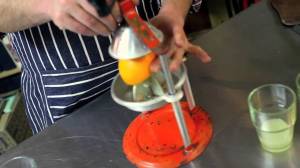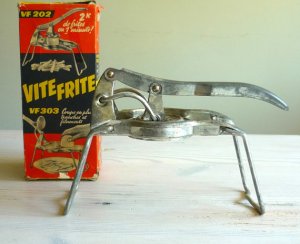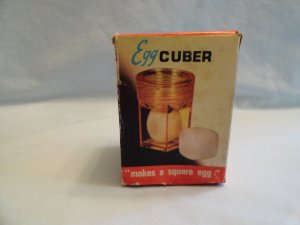One night as I was casually watching one of my favorite shows, Antiques Roadshow, a little gem went on the appraisal table that gave me that feeling I get when I find the perfect pair of shoes at a price I can afford. In other words, I was drooling. The appraisal was quite informative as they always are on the Roadshow. Actually, as I write this I am watching a rerun of the Roadshow. Anyway, this particular appraisal introduced me to an artist I had never heard of, Clarice Cliff. Above is a picture of one of her designs.
Very art deco, which is one of my favorite eras in terms of design, I love many of her pieces. Not all of her pieces are this vibrant. It depended on who she was designing for, however they are all beautiful. Look at this piece …
This piece is a soup tureen. I love the roundness of it. Very earthy. The colors are so vibrant.
Clarice Cliff was born in 1899 in England and began working at the age of 13 (before those pesky child labor laws apparently). At the age of 17 she was hired by A.J. Wilkinson’s pottery. They eventually realized her potential and skill, giving her her own studio which is where she did some of her best work.
She created some iconic pieces for the Art Deco period. According to the Clarice Cliff website, one of her most famous designs “Bizarre” was launched in 1927.

The picture to the right is Clarice.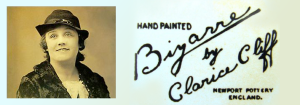 The signature that you see is what you would look for when collecting her pottery. There are a number of backstamps to keep your eye out for and you can find a good visual list of them here.
The signature that you see is what you would look for when collecting her pottery. There are a number of backstamps to keep your eye out for and you can find a good visual list of them here.

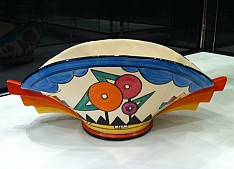
Take a good look at this piece. You can see that it is hand-painted. The strokes of the brush are visible under the glaze. She used vibrant colors and shapes that everyone wanted during the 1920s and 1930s.

Items like this ask a higher price than some of her other work which can look rather bland compared to these cups.
This piece is hers also …

Because it lacks the impact of the pieces above, it does not command the kind of prices the other pieces do. It is. however, a Clarice Cliff design and is definitely worth the asking price.
I just want you to be aware that there are other pieces out there that don’t scream Clarice Cliff but nevertheless are her work. What I really fell in love with though was her dynamic period. It was Bold. Bright. The shapes were innovative. She was an amazing designer.







